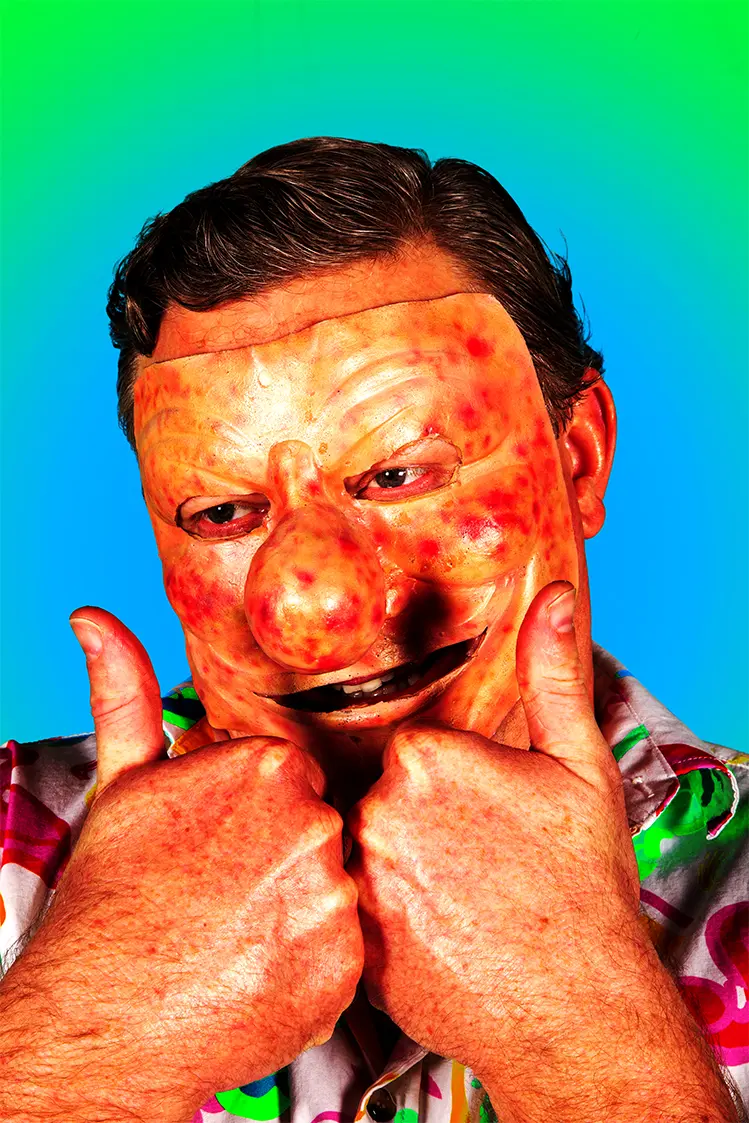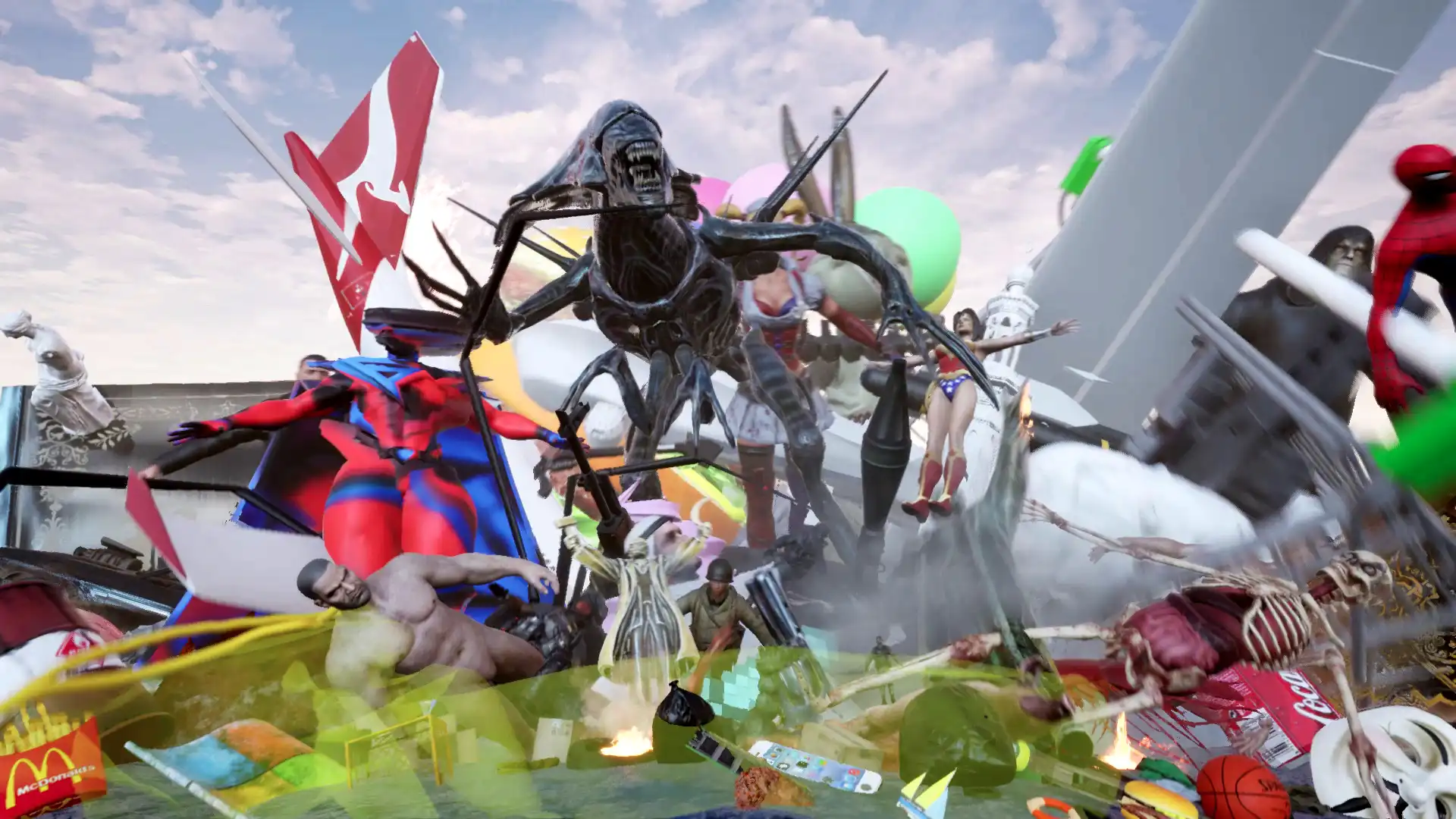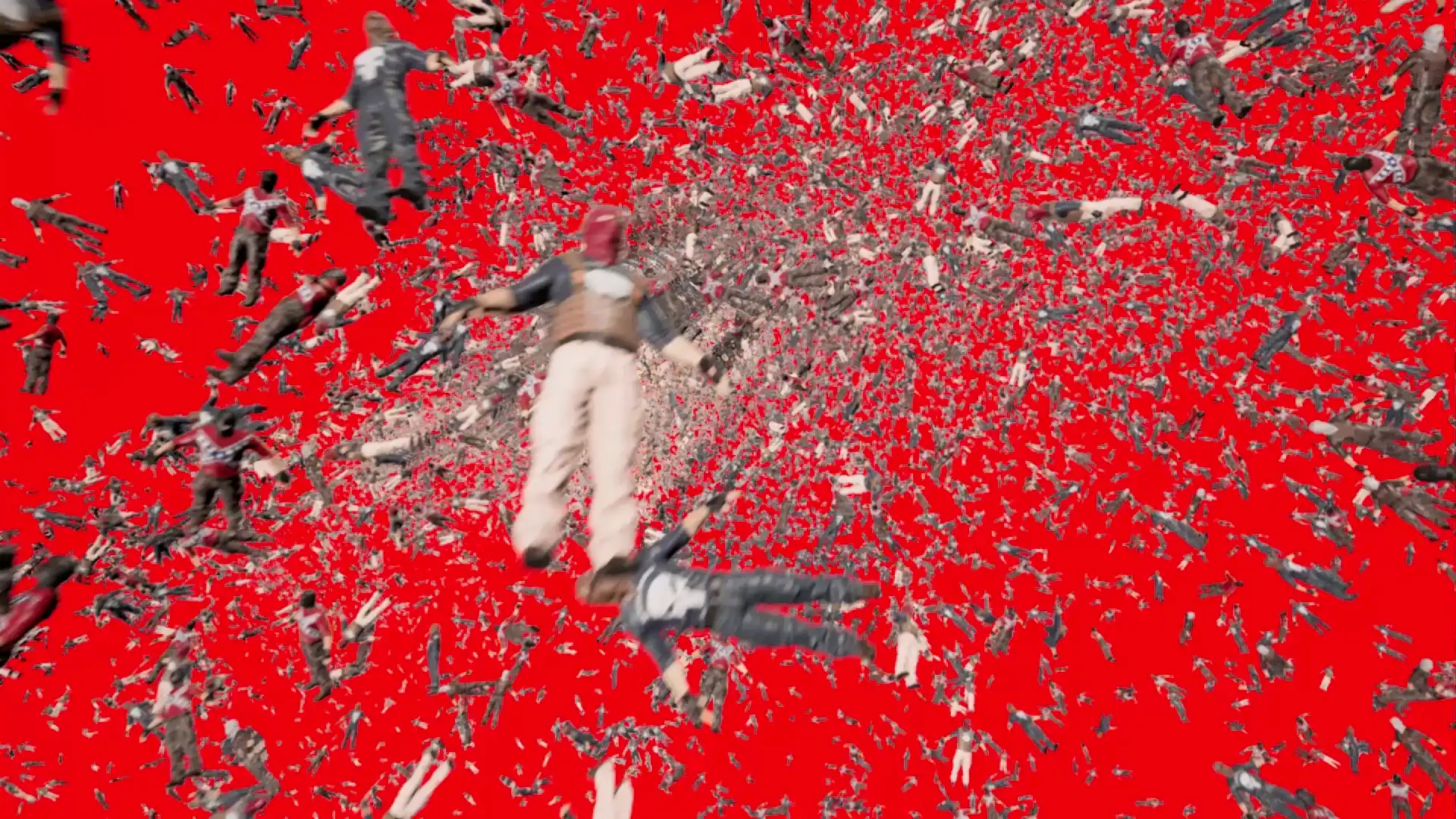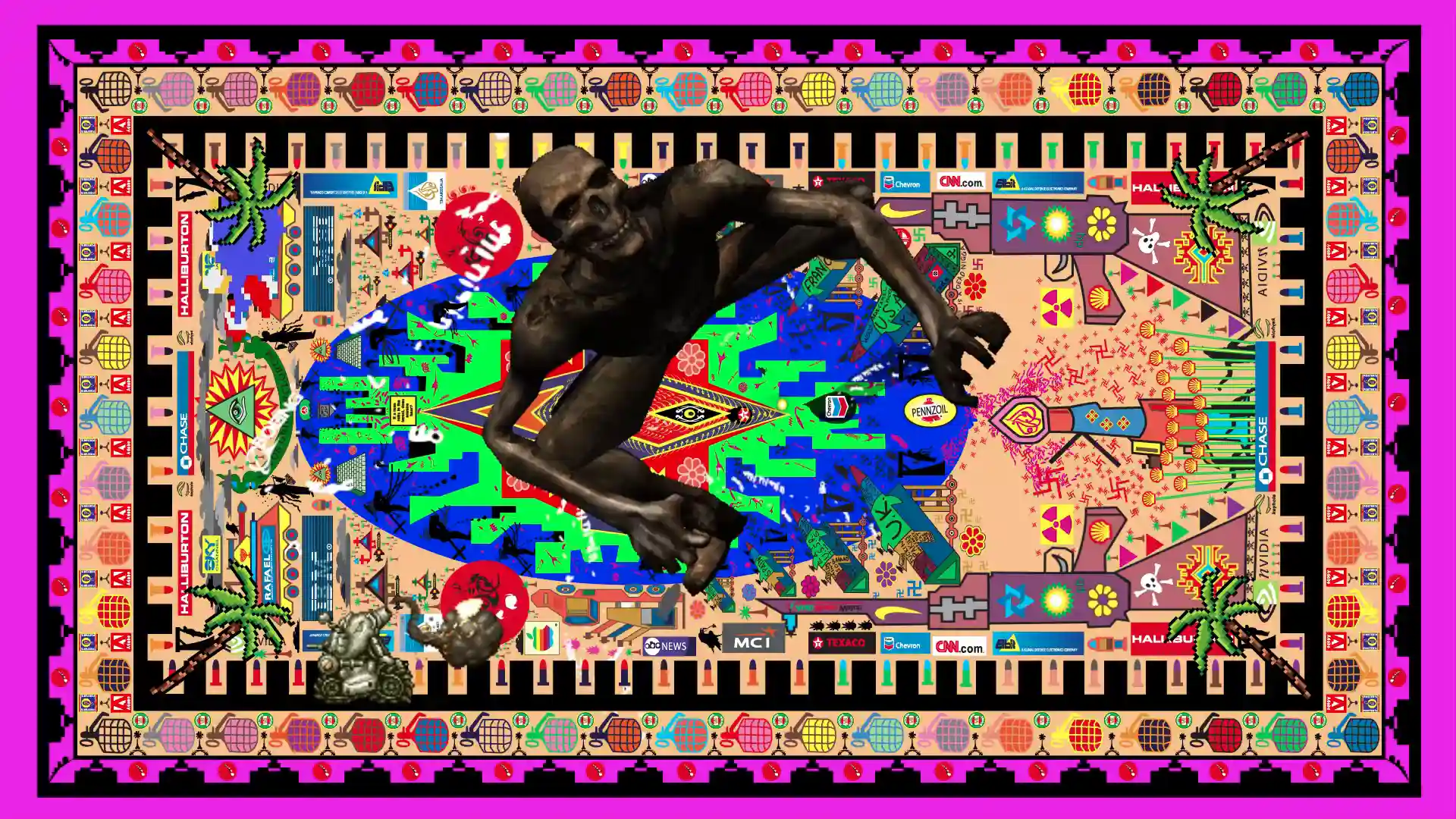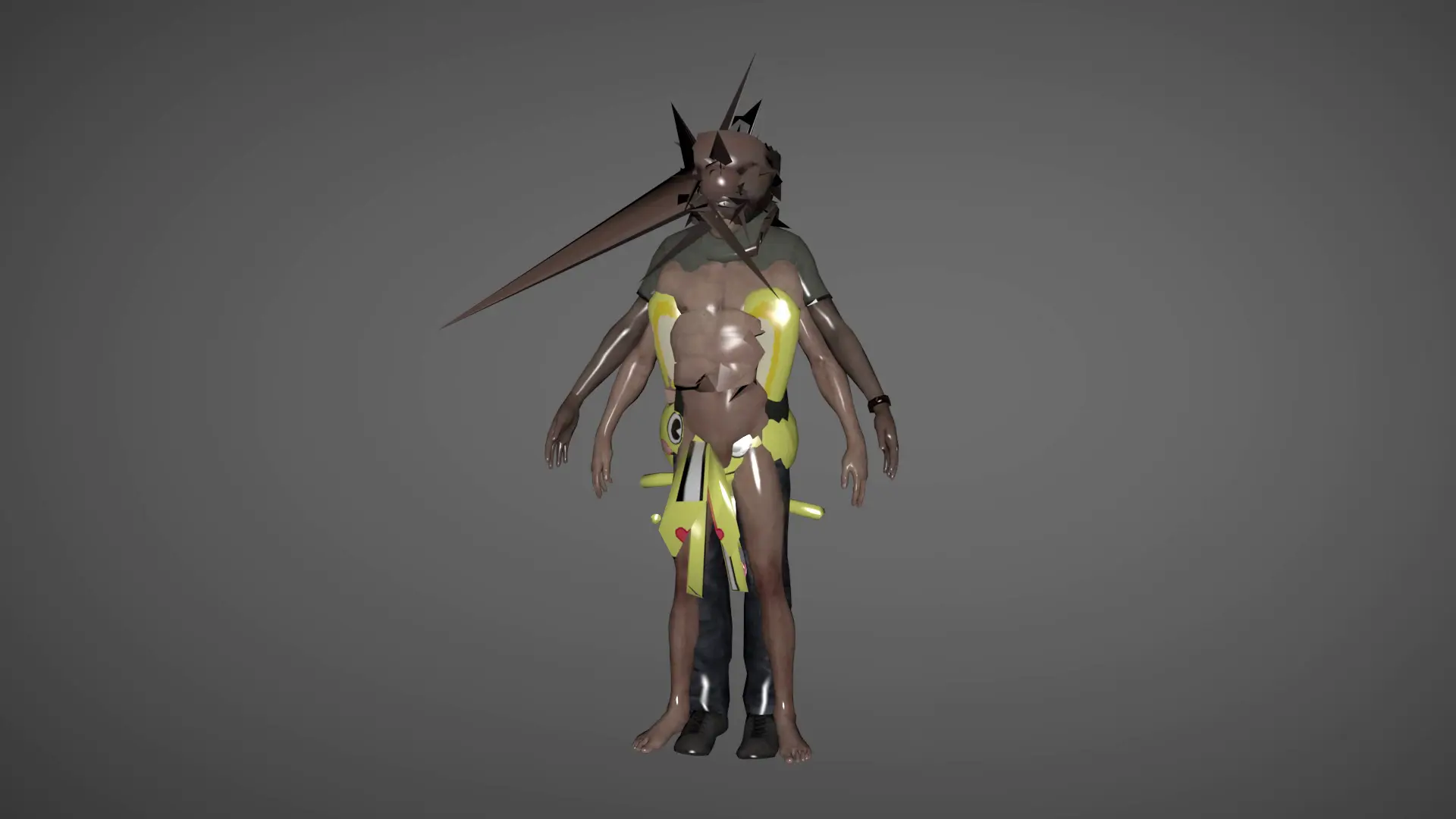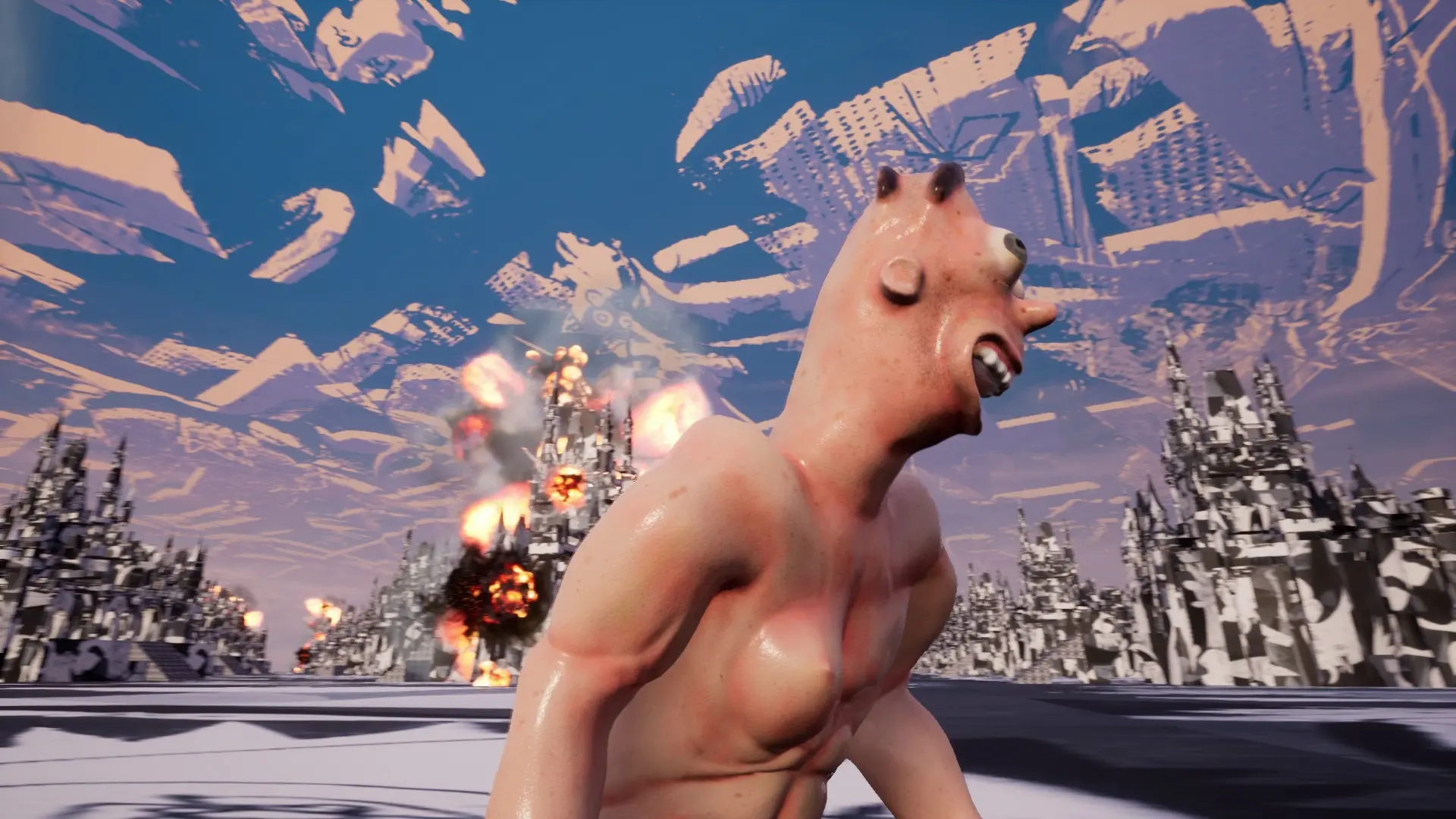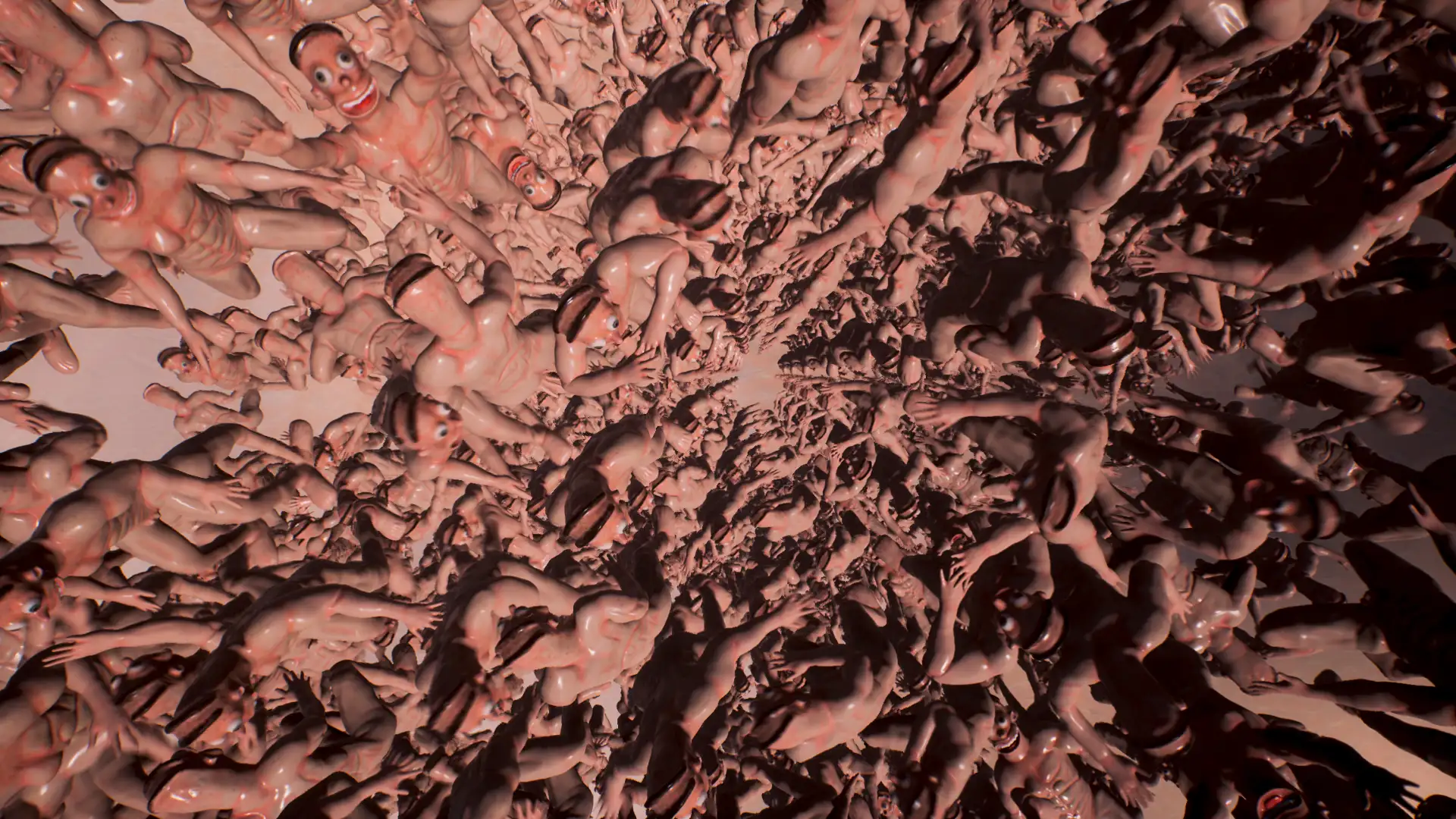Machinae Anima, 2021
Berthold Centre, Saint-Petersburg, Russia
Group Exhibition: Curated by Alina Batichkova
The idea of the exhibition is to represent machinima as a medium through which a computer reveals itself as an artist, or the artist himself delegates the process of creating a work of art to a machine.
Filming of this kind of work takes place exclusively in the space of a video game or game engine. Although often artists themselves construct individual elements or entire worlds. You can recall, for example, the Chris Marker house museum in the virtual world of “Second Life”. I think this practice became really interesting when artists started using glitch and interference more actively, which happened around 2010. “Broken” pixels, interference, noise and other types of glitch enrich the aesthetic message. These elements shift the focus from human feeling to the field of special feeling of the machine, which is inaccessible to us. Moreover, all this points to a completely different type of experience of materiality”
“Machinima is one of the practices that sang an ode to the machine as an artist”
Alina Batichkova
Machinima is a way to shoot movies and video art inside a video game.
The concept itself was invented by mathematician and video game enthusiast Anthony Bailey and originally looked like “machinema” (a combination of the words “machine” and “cinema”). Subsequently, another enthusiast Hugh Hancock decided to create a website for publishing works and communicating with a professional community of players, developers, and artists. However, Hancock made a mistake and accidentally replaced one letter in the name of the site, thanks to which we have the concept of “machinima”. Bailey praised Hancock for this mistake, noting that now the word “soul” is read in this term. It seems extremely important to continue to comprehend the machine in this direction, “reviving” this concept.
In our opinion, machinima, understood as “machinae anima” (“soul of the machine”), makes it possible to consider the phenomenon itself from a different angle.
What does this approach to machinima give? First of all, in this way we focus on the machine as an alternative creator to man, who is able to create works of art.
Artists
Chris Howlett
This video tapestry was made by automating the operation of the machine and the small size of the images it operates with, choosing a random image from the data library.
In the modern world, we are faced with a rapid flow of information that affects the broad geopolitical reality and drives trends in video games. For ancient Eastern and Western civilizations, a carpet or tapestry was a way to perpetuate events. The collective consciousness of the community was line by line woven into the image, which in its entirety formed a recognizable pattern. A handmade carpet is a slow, passive and very valuable information carrier.
Combining 3D play with interactive game mods, video projections, sound objects and installations, Howlett activates an immersive space from which one can critically examine how reality and the simulated environment construct our ideas about the nature of identity. His works provide an opportunity to reflect on how we function, how society responds to these new spaces of interaction, how we can respond to political changes in virtual habitats, as well as how they can represent opportunities for dissent or opposition in our media-saturated culture.
Chris Howlett is a media artist from the USA. Currently, his artistic practice focuses on interactive video, performance and sound art, site-specific sculpture, machinism and painting, exploring a number of fundamental questions about how new technologies are changing cultural and political perceptions of our physical and psychological “I”. In 2000, Howlett graduated from the California Institute of the Arts with a master’s degree. His works have been exhibited at international exhibitions, including the XXI Triennial of the International Exhibition in Milan, GamerZ in Marseille, France, Inter-Society of Electronic Arts in Helsinki, Finland and Stockholm; Videoholica International Video Art Festival in Bulgaria; Los Angeles Freewaves Festival of Film, Video and New Media and exhibited at the Art Centre College of Design in Pasadena, California. He currently holds a PhD from the Queensland University of Technology in Brisbane, Queensland.
Chris Howlett, How to Get An Education, 1-channel synched, HD video (16:9), Stereo, PAL. Duration: 6:00mins, 2016-2020
Thomas Hawranke
In “Play as Animal”, the artist slows down traffic on the road in the game “GTA V” with the help of a special “mod” that allows him to play for various animals. This makes it possible to shift the perspective to non-human objects as full-fledged game characters inside the virtual world. Focusing on non-human aesthetics, the artist emphasizes his rejection of anthropocentrism in art…
Three screens show different modes of the video game structure from the grid and the library of 3D objects to the full level of the game based on them. Hauranke recreates the architectonics of virtual space. A game world without an interwoven narrative.
Thomas Hauranke is an artist and researcher. He received a diploma in audiovisual media from the Cologne Academy of Media Art and a PhD in Media Art from the Bauhaus University in Weimar. In 2005, he joined the susigames group of artists, was an artist in residence at the Karlsruhe Center for Art and Media (ZKM) and received a scholarship for artistic research in the field of video games. In 2009, he co-founded the Paidia Institute, an interdisciplinary research group working between art, technology and science.
Thomas Hawrank, Play as Animals, 2-channel synched, HD video (16:9), Stereo. Duration: 20:00mins, 2019
Victor Morales
In the series of works “30 seconds or more” Morales uses a special plugin to modify the image, which creates the effect of surreal space. He gives the fantasy objects of nature extraordinary flexibility. The virtual camera pulsates with these objects, that is, it is approved by the artist as the same elastic material, since they have the same nature (just as the film is made of the same physical material as the objects it shoots). Morales himself is interested in the ability to endlessly transform the game engine..
Victor Morales was born in Venezuela and currently works in New York, where he is engaged in video, 2D and 3D design, animation, sound design and machinima. Since 2005, he has become obsessed with video game technology and has implemented various game engines into most of his work. Morales’ works are devoted to the study of game engines as a modeling environment. In 2009-2010, he traveled to the residence of the Festspielhaus St. Pelten, Austria, where he produced video projects for the Tonkunsler Orchestra and Wolfgang Mitterer’s new opera Playzero. In 2016, his work became part of the XXI International exhibition “Triennale 21st Century”, “Design after Design”, in Italy. Victor’s interactive immersive live performance “Esperpento” was selected as part of the Sundance Festival New Frontiers 2019, and in 2019, the installation “Esperpento” was awarded the “Best Immersive and Time-based Art” award at the B3 Buchmesse Biennale in Frankfurt, Germany.
Victor Morales, 30 seconds or more: Beyond the magic mushrooms, 2013-2014.
Oscar Nodal
Oscar Nodal believes that glitch has a narrative function, that is, it can tell a story or reveal the psychology of a character. Using the example of his work, he shows how glitch becomes a functional engine of history. In “Glitch upon a time …” Nodal uses the game engine “Red Dead Redemption”, developed according to all genre canons of the western. With his help, he makes a story about a son who lost his father because of a group of robbers in the Wild West. This work presents natural glitches, that is, those that appeared during the game without special mods and actions from the artist’s side.
Oscar Nodal is an artist from Mexico who currently lives and works in New Zealand. He received a Ph.D. in cinema and exhibited at the MOCA Museum of Modern Art (USA), the Art Gallery of the University of Milan IUML (Italy), the Juarez Museum of Art (Mexico). In addition, Nodal is a media theorist and researcher, he can often be found at various festivals dedicated to new media as a lecturer.
Oscar Nodal, Sleepy Existence, 2014, Glitch upon a time in the West, 2016.
ALL EXHIBITIONS
BERTHOLD CENTER
CIVIL STREET, 13-15
Saint Petersburg
HOLA@MEDIAMATERIA.COM


